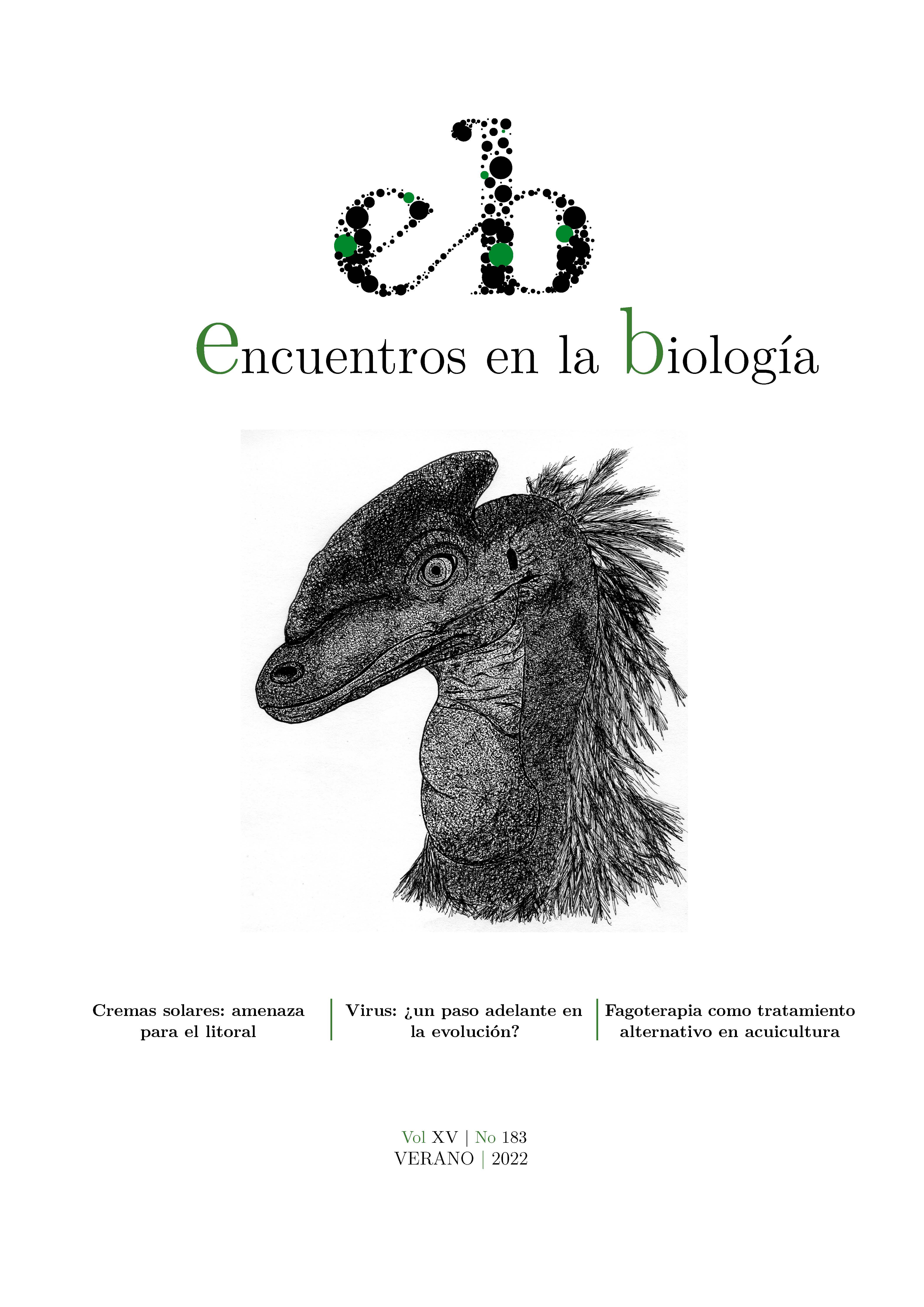Cremas solares: una nueva amenaza para las aguas litorales
DOI:
https://doi.org/10.24310/enbio.v15i183.17120Palabras clave:
ocio, turismo, crema solarResumen
El ocio y el turismo son actividades económicas en auge que han incrementado notablemente su vo- lumen en los últimos años. Con diferencia, las zonas de costa acaparan la mayor parte de la actividad turística y de ocio, y atraen alrededor del 80 % del turismo mundial, cifra que sigue en aumento. Estas actividades causan un impacto sobre el medio marino en las zonas litorales
Descargas
Métricas
Publicación Facts
Perfil de revisores N/D
Información adicional autores
Indexado: {$indexList}
-
Indexado en
- Sociedad Académica/Grupo
- N/D
- Editora:
- Uma Editorial. Universidad de Málaga
Citas
Willenbrink, T., Barker, V., & Diven, D. (2017). The Ef- fects of Sunscreen on Marine Environments. Cutis, 100(6), 369–340.
Borrell - Merlín, M. D. (2005). Turismo, medioambiente y desarrollo sostenible en el Mediterráneo Tourism, the envi- ronment and sustainable development in the Mediterranean. Observatorio Medioambiental, 8, 305–330.
Moína, M. M. (2005). Prevención del cáncer de piel y conse- jo de protección solar. Pediatría Atención Primaria, 7(26), 55-77.
Danovaro, R., Bongiorni, L., Corinaldesi, C., Giovannelli, D., Damiani, E., Astolfi, P., Greci, L., & Pusceddu, A. (2008). Sunscreens cause coral bleaching by promoting viral infec- tions. Environmental Health Perspectives, 116(4), 441–447. https://doi.org/10.1289/ehp.10966
Labille, J., Slomberg, D., Catalano, R., Robert, S., Apers- Tremelo, M. L., Boudenne, J. L., ... & Radakovitch, O. (2020). Assessing UV filter inputs into beach waters during recreational activity: A field study of three French Medite- rranean beaches from consumer survey to water analysis. Science of the Total Environment, 706, 136010.
Tovar-Sánchez, A., Sánchez-Quiles, D., Blasco J. (2020). Sunscreens in Coastal Ecosystems: Occurrence, Behavior, Effect and Risk. The Handbook of Environmental Chemistry. Vol 94: 1-15.
Cuccaro, A., Freitas, R., De Marchi, L., Oliva, M., Pretti, C. (2022). UV-flters in marine environments: a review of research trends, meta-analysis, and ecotoxicological impacts of 4-methylbenzylidene-camphor and benzophenone-3 on marine invertebrate communities. Environmental Science and Pollution Research 1 – 22. https://doi.org/10.1007/ s11356-022-21913-4
Fastelli, P., & Renzi, M. (2019). Exposure of key marine species to sunscreens: Changing ecotoxicity as a possible indirect effect of global warming. Marine Pollution Bulletin, 149. https://doi.org/10.1016/j.marpolbul.2019.110517
Ngoc, L.T.N., Van Tran V.„ Moon, J.-Y., Chae, M., Park, D., Lee, Y.-C. (2019). Recent Trends of Sunscreen Cos- metic: An Update Review. Cosmetics 2019, 6, 64; doi: 10.3390/cosmetics6040064
Tovar-Sánchez A, Sánchez-Quiles D, Basterretxea G, Benedé JL, Chisvert A, Salvador A, et al. (2013) Sunscreen Products as Emerging Pollutants to Coastal Waters. PLoS ONE 8(6): e65451. https://doi.org/10.1371/journal.pone.0065451
Saiz Fernández, A. (2021). Release and interaction models of sunscreen components to the marine environment. Uni- versidad de Cantabria.
Ruiz-Gutiérrez, G.; Rodríguez-Romero, A.; Tovar-Sánchez, A.; Viguri Fuente, J.R (2022). Analysis and Modeling of Sunscreen Ingredients’ ehavior in an Aquatic Environ- ment. Oceans 2022, 3, 340–363. https://doi.org/10.3390/ oceans3030024
Crouzet P., Leonard J., Nixon S., Rees Y., Parr W., Bøges- trand J., Kristensen P., Lallana C., Izzo G., Bak J., Lack TJ., Thyssen N. (1999). Nutrients in European ecosytems. Envi- ronmental assessment report no. 4. Copenhagen: European Environmental Agency.
Sánchez-Quiles, D., & Tovar-Sánchez, A. (2014). Sunscreens as a source of hydrogen peroxide production in coastal waters. Environmental Science and Technology, 48(16), 9037–9042. https://doi.org/10.1021/es5020696
McCoshum, S. M., Schlarb, A. M., & Baum, K. A. (2016). Direct and indirect effects of sunscreen exposure for reef biota. Hydrobiologia, 776(1), 139–146. https://doi.org/10. 1007/s10750-016-2746-2
Agawin, N., Sunyer-Caldú, A., Díaz-Cruz, MS., Frank- Comas, A., García-Márquez, MG., Tovar-Sánchez, A. (2022). Mediterranean seagrass Posidonia oceanica accu- mulates sunscreens UV filters. Marine Pollution Bulletin 176 (2022) 113417. https://doi.org/10.1016/j.marpolbul.2022.113417
Rodil, R., Moeder, M., Altenburger, R., Schmitt-Jansen, M. (2009). Photostability and phytotoxicity of selected sunscreen agents and their degradation mixtures in wa- ter. Anal Bioanal Chem (2009) 395:1513–1524. DOI10.1007/ s00216-009-3113-1
Rodríguez-Romero et al. (2019). Sunscreens as a New Source of Metals and Nutrients to Coastal Waters. Environ. Sci. Technol. 2019, 53, 10177-10187
Aranda Gutiérrez, C. (2018). Potencial de extractos de algas y líquenes frente a la radiación UV.
Sabanoglu, T. Cosmetics Industry—Statistics & Facts. Available online: https://www.statista.com/topics/3137/ cosmetics-industry/#dossierKeyfigures (accessed on 2 September 2022).
Descargas
Publicado
Cómo citar
Número
Sección
Licencia
Esta obra está bajo licencia internacional Creative Commons Reconocimiento-NoComercial-CompartirIgual 4.0.
Esta revista provee acceso libre inmediato a su contenido bajo el principio de hacer disponible gratuitamente la investigación al público. Todos los contenidos publicados en Encuentros en la Bilogía están sujetos a la licencia Creative Commons Reconocimento-NoComercia-Compartirigual 4.0 cuyo texto completo puede consultar en <http://creativecommons.org/licenses/by-nc-sa/4.0>
Se pueden copiar, usar, difundir, transmitir y exponer públicamente, siempre que:
Se cite la autoría y la fuente original de su publicación (revista, editorial y URL de la obra).
No se usen para fines comerciales.
Se mencione la existencia y especificaciones de esta licencia de uso
Los derechos de autor son de dos clases: morales y patrimoniales. Los derechos morales son prerrogativas perpetuas, irrenunciables, intransferibles, inalienables, inembargables e imprescriptibles. De acuerdo con la legislación de derechos de autor, Encuentros en la Biología reconoce y respeta el derecho moral de los autores/as, así como la titularidad del derecho patrimonial, el cual será cedido a la Universidad de Málaga para su difusión en acceso abierto. Los derechos patrimoniales, se refieren a los beneficios que se obtienen por el uso o divulgación de las obras. Encuentros en la Biología se publica en open access y queda autorizada en exclusiva para realizar o autorizar por cualquier medio el uso, distribución, divulgación, reproducción, adaptación, traducción o transformación de la obra.
Es responsabilidad de los autores/as obtener los permisos necesarios de las imágenes que están sujetas a derechos de autor.
Los autores/as cuyas contribuciones sean aceptadas para su publicación en esta revista conservarán el derecho no exclusivo de utilizar sus contribuciones con fines académicos, de investigación y educativos, incluyendo el auto-archivo o depósito en repositorios de acceso abierto de cualquier tipo.
La edición electrónica de esta revista esta editada por la Editorial de la Universidad de Málaga (UmaEditorial), siendo necesario citar la procedencia en cualquier reproducción parcial o total.






